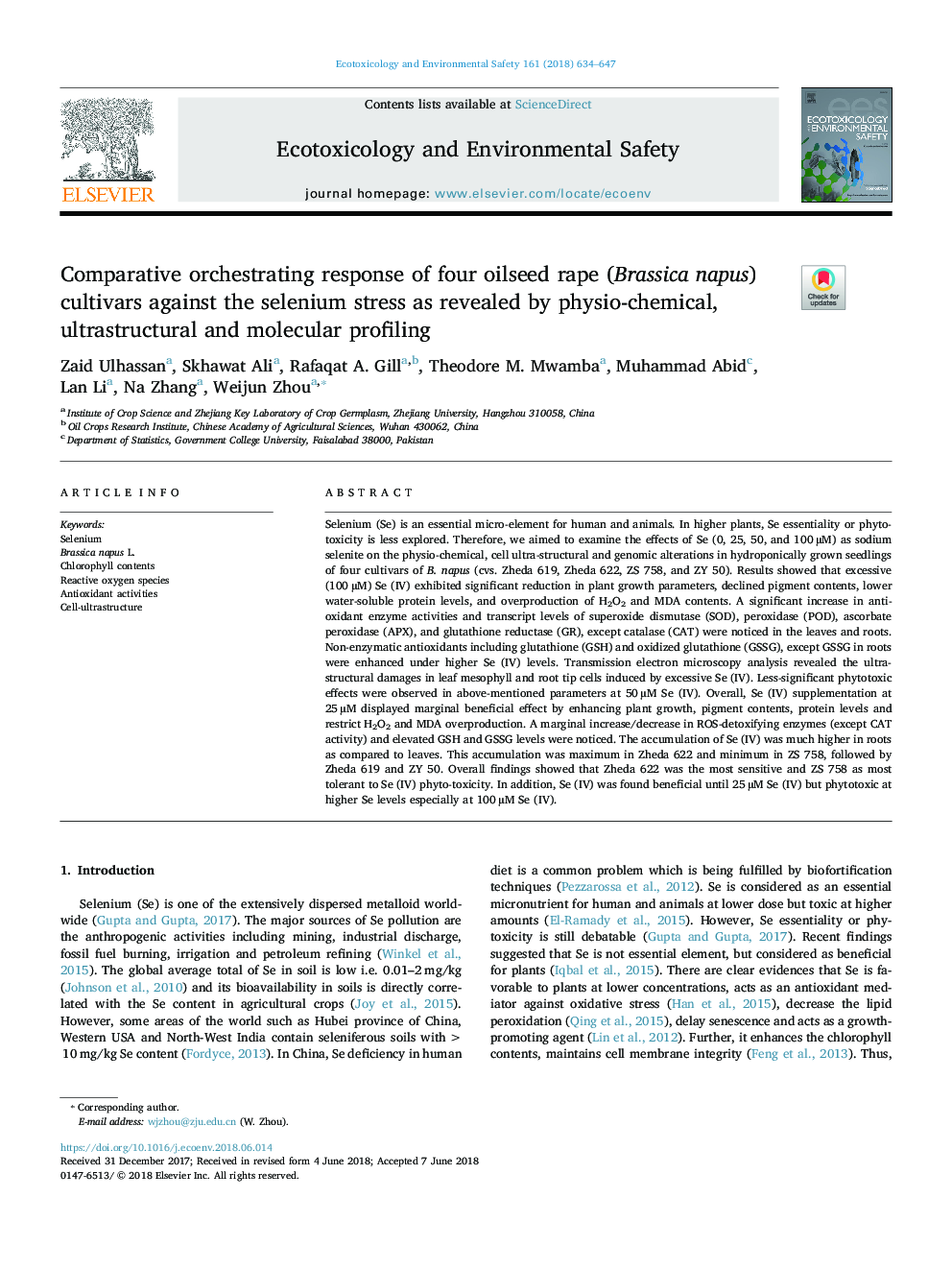| Article ID | Journal | Published Year | Pages | File Type |
|---|---|---|---|---|
| 8853720 | Ecotoxicology and Environmental Safety | 2018 | 14 Pages |
Abstract
Selenium (Se) is an essential micro-element for human and animals. In higher plants, Se essentiality or phyto-toxicity is less explored. Therefore, we aimed to examine the effects of Se (0, 25, 50, and 100â¯ÂµM) as sodium selenite on the physio-chemical, cell ultra-structural and genomic alterations in hydroponically grown seedlings of four cultivars of B. napus (cvs. Zheda 619, Zheda 622, ZS 758, and ZY 50). Results showed that excessive (100â¯ÂµM) Se (IV) exhibited significant reduction in plant growth parameters, declined pigment contents, lower water-soluble protein levels, and overproduction of H2O2 and MDA contents. A significant increase in antioxidant enzyme activities and transcript levels of superoxide dismutase (SOD), peroxidase (POD), ascorbate peroxidase (APX), and glutathione reductase (GR), except catalase (CAT) were noticed in the leaves and roots. Non-enzymatic antioxidants including glutathione (GSH) and oxidized glutathione (GSSG), except GSSG in roots were enhanced under higher Se (IV) levels. Transmission electron microscopy analysis revealed the ultrastructural damages in leaf mesophyll and root tip cells induced by excessive Se (IV). Less-significant phytotoxic effects were observed in above-mentioned parameters at 50â¯ÂµM Se (IV). Overall, Se (IV) supplementation at 25â¯ÂµM displayed marginal beneficial effect by enhancing plant growth, pigment contents, protein levels and restrict H2O2 and MDA overproduction. A marginal increase/decrease in ROS-detoxifying enzymes (except CAT activity) and elevated GSH and GSSG levels were noticed. The accumulation of Se (IV) was much higher in roots as compared to leaves. This accumulation was maximum in Zheda 622 and minimum in ZS 758, followed by Zheda 619 and ZY 50. Overall findings showed that Zheda 622 was the most sensitive and ZS 758 as most tolerant to Se (IV) phyto-toxicity. In addition, Se (IV) was found beneficial until 25â¯ÂµM Se (IV) but phytotoxic at higher Se levels especially at 100â¯ÂµM Se (IV).
Related Topics
Life Sciences
Environmental Science
Environmental Chemistry
Authors
Zaid Ulhassan, Skhawat Ali, Rafaqat A. Gill, Theodore M. Mwamba, Muhammad Abid, Lan Li, Na Zhang, Weijun Zhou,
